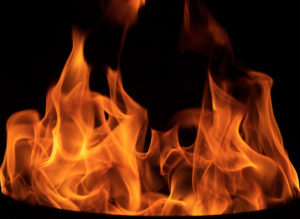 While cooking with grease can enhance the flavor of your food, it also can increase the risk of a kitchen fire. In fact, the National Fire Protection Association (NFPA) notes that cooking fires are the No. 1 cause of fires and fire injuries in the home. According to a recent NFPA report, there are an average of 471 home cooking fires reported every day in the U.S., and that results in 530 deaths, 5,270 injuries and property damage of about $1.1 billion every year.
While cooking with grease can enhance the flavor of your food, it also can increase the risk of a kitchen fire. In fact, the National Fire Protection Association (NFPA) notes that cooking fires are the No. 1 cause of fires and fire injuries in the home. According to a recent NFPA report, there are an average of 471 home cooking fires reported every day in the U.S., and that results in 530 deaths, 5,270 injuries and property damage of about $1.1 billion every year.
To prevent grease fires, it’s important to know how they occur. For starters, leaving an active burner unattended can spell immediate danger. Stepping away from the frying pan, even “for just a minute,” could be all it takes for the grease to get hot enough to start smoking. Within moments, that grease can burst into flames.
Knowing the proper steps of how to put out a grease fire is key to avoiding injury and serious property damage for you and your neighbors. It’s particularly important to know stovetop safety if you live in a multifamily complex, such as senior-living townhomes or apartments: Cooks age 65 and older face a higher risk of fatalities from cooking fires than any other age group, the NFPA reports.
5 Things You Should Never Do With a Grease Fire
When a grease fire breaks out on your stovetop, there isn’t a lot of time to think, so you need to know in advance what you should (and shouldn’t) do to manage the situation quickly and safely. Educating yourself about how to put out a grease fire can make the difference between life and death in those few seconds after the fire begins. First, let’s look at five things you should never do if a grease fire occurs:
Putting Out a Grease Fire
If the unexpected does occur and grease catches fire on your stovetop, you’ll have to act quickly. If you catch the fire when it has just started and it’s still confined to the pan, try managing the situation using one of these four methods:
Turn off the burner. Sometimes eliminating the heat source (if the fire has just started and it is still safe to do so) will be enough. As mentioned earlier, however, don’t try moving the pot off the burner, as it can splash and cause a bigger fire.
Put a heavy, metal lid on top of the flaming pan. Putting a lid on the pan will prevent oxygen from reaching the flames and also ensures that the fire is contained to the pan. However, make sure you can do this safely and without getting burned.
Use a handheld fire extinguisher rated for Class B or K fires. It’s a good idea to keep a handheld fire extinguisher in your kitchen in case a stovetop fire gets out of control, but make sure that you’re comfortable lifting and operating it. Familiarize yourself with how it works and make sure it’s in an easy-to-reach location near the stove. (Remember the acronym P.A.S.S. to operate it: Pull, Aim, Squeeze and Sweep.) Be aware that the chemical mixture in fire extinguishers can contaminate your kitchen and it is going to make a mess, but it’s definitely better than the alternative of extensive fire damage.
An Easier Way to Manage Grease Fires
All of these methods depend upon you being near a hot stove when the fire starts and having the correct items or equipment to keep the fire from spreading. For a more dependable way to take care of grease fires on your stove, StoveTop FireStop’s suppression products for range hoods or microwaves will automatically go to work even if you aren’t nearby. When a fire occurs, StoveTop FireStop’s products are activated by direct flame contact and distribute a fine, dry powder to suppress the flames.
Taking the precautions that best suit your needs will ensure that you, your family and your property stays safe in the event of a grease fire.
Get In Touch
Our Products